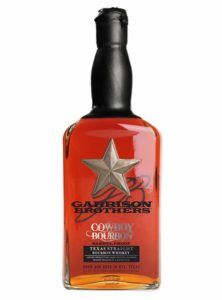Originally published by D. Todd Smith.
 This is the fifth and final installment of my series on mobile lawyering for appellate practitioners. To easily access the entire series, click here.
This is the fifth and final installment of my series on mobile lawyering for appellate practitioners. To easily access the entire series, click here.
By this point, you should have the equipment and the software to get your work done from the road. This post discusses some special considerations for working efficiently and securely.
Troubleshooting Tech Problems
Practicing from the road requires a certain amount of independence. Working outside the office—away from coworkers who can help you troubleshoot technology problems—requires a greater degree of self-sufficiency and resourcefulness.
Most troubleshooting involves searching for well-known solutions to common problems. As funny as it sounds, this is best accomplished via Google. The better you are at solving common problems by searching Google, the easier it will be to work outside the office using only your tablet or smartphone.
Data Security
Device Encryption
If your mobile device is lost or stolen, your data should be secure enough that a third party cannot gain access to it. Obviously, that means password-protecting all of your devices.
But it also means choosing hard-to-guess passwords. Using complex passwords is often advised (e.g., Xf7<8zf$qjf89), but they’re hard to type. A simpler way to create hard-to-guess passwords is to use a passphrase.
A passphrase is a sequence of words or phrases, with spaces. For example, “Dog Missile Rainbow” is a nonsense phrase that’s easy to type, but hard to guess.
So, a password is step one. The second step is to encrypt your hard drive or device. If you do not encrypt the data on your device, then a hacker could remove the hard drive and plug it into a new device to access the data.
Encryption is easy to set up. If you aren’t sure how, then just research on the internet as discussed above. Type in the name of your device and the word “how to encrypt” and you’ll find helpful articles.
Password Manager
When you sign in to do your banking online, there’s a reason the site won’t let you simply type “12345678” or “password” to access your data. Complex or strong passwords reduce the chances that a hacker will be able to access your online accounts and do something malicious.
The problem with strong passwords is that they are impossible to remember. But writing them on a Post-It note stuck to your computer monitor or keeping them in the notes app on your phone is just looking for trouble.
Password managers help avoid these issues by generating strong passwords and storing them in a secure location. Without the master password—the only one you’ll have to remember—the list is locked down. By entering the master password, you enable the password manager to fill in passwords for you when logging in to certain websites.
Three popular password managers are 1Password, LastPass, and Dashlane. All are free or very affordable and will sync to mobile devices. A password manager is an investment every appellate road warrior should make.
Dual-Factor Authentication
The primary concern with online storage services is security. Anyone with your password can access all of the documents you have stored in your online document service. And if they have access, they can often easily bulk-download those documents.
So, you must ensure that mere possession of your password will not grant a hacker access to those documents. And how do you accomplish that? Use dual-factor authentication. This is security that requires more than a mere password to access an online account. The second factor required is physical possession of your smartphone.
If an important account offers dual-factor authentication, you should enable it. For example, you should set it up on all of your online document storage accounts, your financial services accounts, and your email accounts.
Here’s how dual-factor authentication works in practice. If someone tries to access an online account with dual-factor authentication enabled, and they’re using a device that has never accessed that account before, they won’t be able to get in.
For example, say that a Russian hacker has the password to your Dropbox account and tries to login from a computer in Moscow. Dropbox’s security system will detect that a new computer is accessing your account (red flag #1) from a location that has never been used before (red flag #2).
Any red flag in Dropbox’s system will cause it to send a text message to your phone with a six-digit code. And the system will inform the hacker in Moscow that they need to also enter the six-digit code. Typically, the code will only be valid for about five minutes. And if the hacker tries to guess the code and guesses wrong more than three times, the system will typically lock up your account.
Some people perceive dual-factor authentication as a hassle. And that’s true. But it’s worth the hassle because it prevents someone else from accessing your online accounts even if they have your password.
Internet Connectivity
Being able to connect to the internet reliably and securely is crucial. Fortunately, you have many options. Unfortunately, not all of those options are appropriate or safe.
When traveling, it’s tempting to connect through free wi-fi provided in various places such as hotels, coffee shops, conference rooms, and event spaces. Be wary of connecting to these wi-fi services. They provide the best opportunity for hackers to access your device and your precious data.
To ensure that you are not vulnerable to hackers when using public wi-fi, you should use a virtual private network service. You can quickly research this by typing “VPN services” into Google. Among the top picks are NordVPN, IPVanish, and TunnelBear.
Make sure that the service you want works with your devices. Sometimes using a VPN will slow down your internet speed, so that’s another factor to consider.
VPN services are crucial if you’re traveling in foreign countries, especially ones that are disreputable. The cost of VPN services is reasonable. Expect to pay about $60 per year to use a service that covers all of your devices.
Today, every lawyer should be able to connect to the internet via their smartphone. If your smartphone service provider has an option for sharing that internet connection with an external device (e.g., your laptop), you should enable that option. You may have to pay extra, but it will be worth it.
If you cannot access the internet securely through a VPN, using your smartphone as a personal hotspot will do the trick. You need not use a VPN when you’re accessing through your cellular service, but if you want to be extra secure, you can.
Bluetooth Connectivity
If you want to use wireless headphones with your devices you need to know how to connect them via Bluetooth. You may also want to use a wireless keyboard or similar accessories. If so, you must know how to connect those devices via Bluetooth.
This is pretty easy in most cases. The trickier issue is fixing connectivity problems that sometimes crop up. Usually, the solution is to untether the Bluetooth device and reconnect it. If that doesn’t solve the problem, do some internet research.
Digital Signatures
Being able to sign documents that people send you by email is an important skill in today’s mobile world. What would you do if you had only your smartphone and received an email attachment that required your signature?
That happens a lot. And so you should learn how to sign a document with nothing more than your smartphone. PDF Expert will store an image of your signature for just this situation. Adobe’s Acrobat Reader mobile app is easy to use and free, so try that unless you have a different method that’s more familiar.
Email
Obviously, your smartphone will allow you to receive and send emails. Dealing with attachments, however, can sometimes become challenging.
You should be skilled at downloading attachments and working with them on your phone. And you should then be able to transmit a document that you’ve worked on with your phone to someone.
Mobile devices generally will require you to send an attachment to the app you want to use to work with it. For example, in the digital signature example above, you’d have to send the attachment to PDF Expert or Adobe Acrobat Reader. Then you’d sign the document using your finger or a stylus. Then you’d send the edited document back to your email program as an attachment.
Your email program should be connected to your contacts list so you can easily access the recipient’s email address. But sometimes you don’t have the person in your contacts.
What do you do then?
If you can find the email address somewhere else and copy it, then you can paste it into the email address field. Or, if you have to, you can just type the address in manually, being very careful to get every single letter correct, or else the email will wind up bouncing back without reaching its intended destination.
Synchronization
The online storage services discussed in this article all have apps that allow you to synchronize or share documents to your mobile devices. It’s unrealistic to carry around an entire synchronized set of your digital documents on your mobile phone or tablet. At best you can download a small batch.
But you should strive to have your key data synchronized among all of your devices. So, if you add contact information for someone to the database on your phone it should show up instantly on all your other devices.
And if you make a calendar appointment on your phone, the same thing should happen. This is especially important if you’re working with an assistant who has control of your digital calendar.
Synchronization is complex, and that’s why it’s hardly ever 100% reliable. But it’s usually at least 97% reliable. The problem is we all assume our devices are constantly 100% in sync.
When synchronization stops working, you’re not typically given a warning. Even if you do get a warning, it often goes unnoticed. So, you should be mindful of and vigilant about potential synchronization problems. The best practice is to periodically check whether a new contact record you added on one device is showing up on other devices and how long the sync takes.
Conclusion
The hardware and software available to an appellate road warrior is largely a matter of preference. Getting comfortable with the technology, becoming proficient at using it, and learning how to preserve data security are important first steps.
Upon reaching that threshold, however, the majority of tasks most appellate lawyers must accomplish to serve their clients need not be performed in a traditional office. The right equipment, software, and a secure, high-speed internet connection provide the tools necessary for the job. Because we’re able to interface with courts electronically and in-person client meetings are rare, our location just doesn’t matter.
So, take that long weekend, extended vacation, or sabbatical if your firm allows. See the world and spend time with your family. With the right setup and the proper mindset, work shouldn’t hold you back.
Thanks again to Ernie Svenson for his significant contribution to this series.
Image courtesy of Flickr by Barry Dahl.
The post The Appellate Road Warrior: Essential Skills and Best Practices appeared first on Texas Appellate Law.



Curated by Texas Bar Today. Follow us on Twitter @texasbartoday.
from Texas Bar Today https://ift.tt/2uMFvNI
via
Abogado Aly Website
 The pitches in your arsenal are your fastball and your curveball; it’s the late innings; third time around the batting order; they’re sitting on the fastball. Once they catch up to it (and they will unless you’re Justin Verlander which, face it, you are not), goodbye game. Why not go to the bender to keep ’em uncomfortable and give you options? In
The pitches in your arsenal are your fastball and your curveball; it’s the late innings; third time around the batting order; they’re sitting on the fastball. Once they catch up to it (and they will unless you’re Justin Verlander which, face it, you are not), goodbye game. Why not go to the bender to keep ’em uncomfortable and give you options? In 



 Jim Duncey is more than just the majority owner of Duncey’s Caps, Inc. – he’s the face of the Company, appearing on billboards, in television and radio ads, and on the home page of the company’s website. He is one of the most influential business leaders in the city. On Saturday night Jim and his wife Diane attend a charity event at the toniest country club in town. With a little “liquid courage” Jim was the high bidder at the night’s live auction, which earned him respect (and envy) from those in attendance. On the way home Jim ran a stop sign and t-boned another vehicle. The driver of the other vehicle suffered serious injuries that would force her to spend several weeks in the hospital. Police investigating the accident gave Jim a field sobriety test, which he failed. Jim ended blowing a .12 BAC and was charged with DWI. The accident, along with Jim’s arrest, was the lead story on the Sunday news.
Jim Duncey is more than just the majority owner of Duncey’s Caps, Inc. – he’s the face of the Company, appearing on billboards, in television and radio ads, and on the home page of the company’s website. He is one of the most influential business leaders in the city. On Saturday night Jim and his wife Diane attend a charity event at the toniest country club in town. With a little “liquid courage” Jim was the high bidder at the night’s live auction, which earned him respect (and envy) from those in attendance. On the way home Jim ran a stop sign and t-boned another vehicle. The driver of the other vehicle suffered serious injuries that would force her to spend several weeks in the hospital. Police investigating the accident gave Jim a field sobriety test, which he failed. Jim ended blowing a .12 BAC and was charged with DWI. The accident, along with Jim’s arrest, was the lead story on the Sunday news.  Chip Morris from Kane Russell Coleman Logan PC discusses the top ten mistakes employers can make—in the oilfield, and beyond—when drafting non-compete agreements.
Chip Morris from Kane Russell Coleman Logan PC discusses the top ten mistakes employers can make—in the oilfield, and beyond—when drafting non-compete agreements. To highlight some of the posts that stand out from the crowd, the editors of Texas Bar Today have created a list from the week’s blog posts of the top ten based on subject matter, writing style, headline, and imagery. We hope you enjoy this installment.
To highlight some of the posts that stand out from the crowd, the editors of Texas Bar Today have created a list from the week’s blog posts of the top ten based on subject matter, writing style, headline, and imagery. We hope you enjoy this installment. It’s no secret these days that content marketing is a must for law firms when it comes to boosting online presence and attracting new clients. What better way to achieve brand awareness and traffic to your website than blogging?
It’s no secret these days that content marketing is a must for law firms when it comes to boosting online presence and attracting new clients. What better way to achieve brand awareness and traffic to your website than blogging? Seyfarth Synopsis: The trend-lines describe employment-related litigation in the past 25 years: (1) the emergence of arbitration as a flexible and increasingly legally viable to resolve employment claims; and (2) the dangerous politicization of the judicial selection process in federal and state government. These trends should make arbitration in any state, whether red or blue, an even more attractive dispute-resolution device for employers and employees alike.
Seyfarth Synopsis: The trend-lines describe employment-related litigation in the past 25 years: (1) the emergence of arbitration as a flexible and increasingly legally viable to resolve employment claims; and (2) the dangerous politicization of the judicial selection process in federal and state government. These trends should make arbitration in any state, whether red or blue, an even more attractive dispute-resolution device for employers and employees alike.
 In 2011, Tottenham and the State Bar of Texas implemented the statewide program that provides pro bono civil legal assistance to veterans and their families who otherwise cannot afford legal services. Texas has the second-highest population of veterans in the nation, and a distressing number of Texas veterans are living in poverty or without homes. TLTV was modeled after a similar program launched by the Houston Bar Association.
In 2011, Tottenham and the State Bar of Texas implemented the statewide program that provides pro bono civil legal assistance to veterans and their families who otherwise cannot afford legal services. Texas has the second-highest population of veterans in the nation, and a distressing number of Texas veterans are living in poverty or without homes. TLTV was modeled after a similar program launched by the Houston Bar Association. This is the fifth and final installment of my series on mobile lawyering for appellate practitioners. To easily access the entire series, click
This is the fifth and final installment of my series on mobile lawyering for appellate practitioners. To easily access the entire series, click